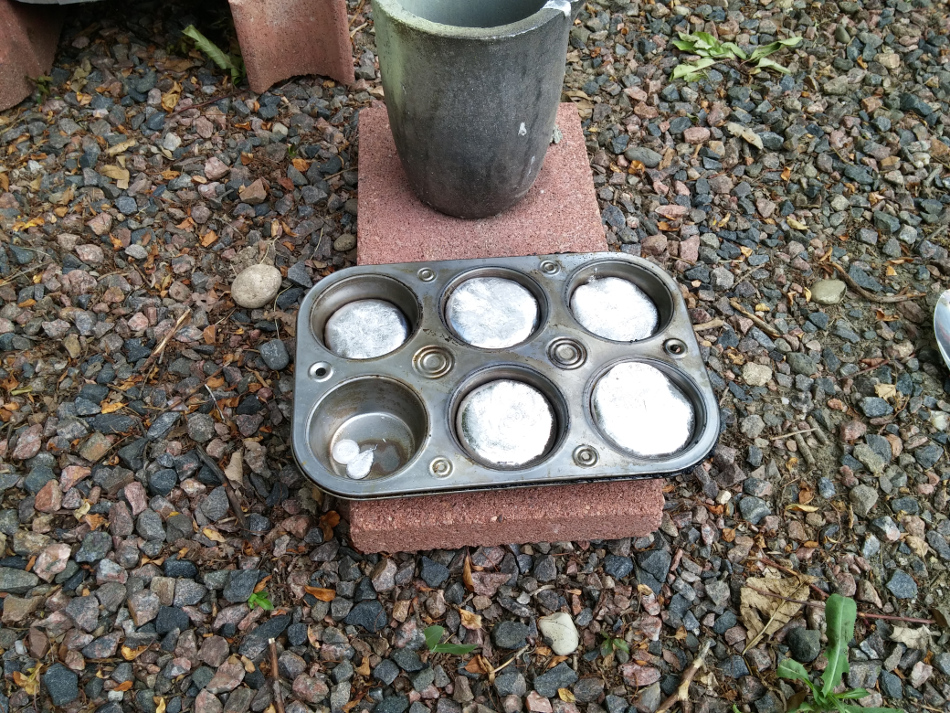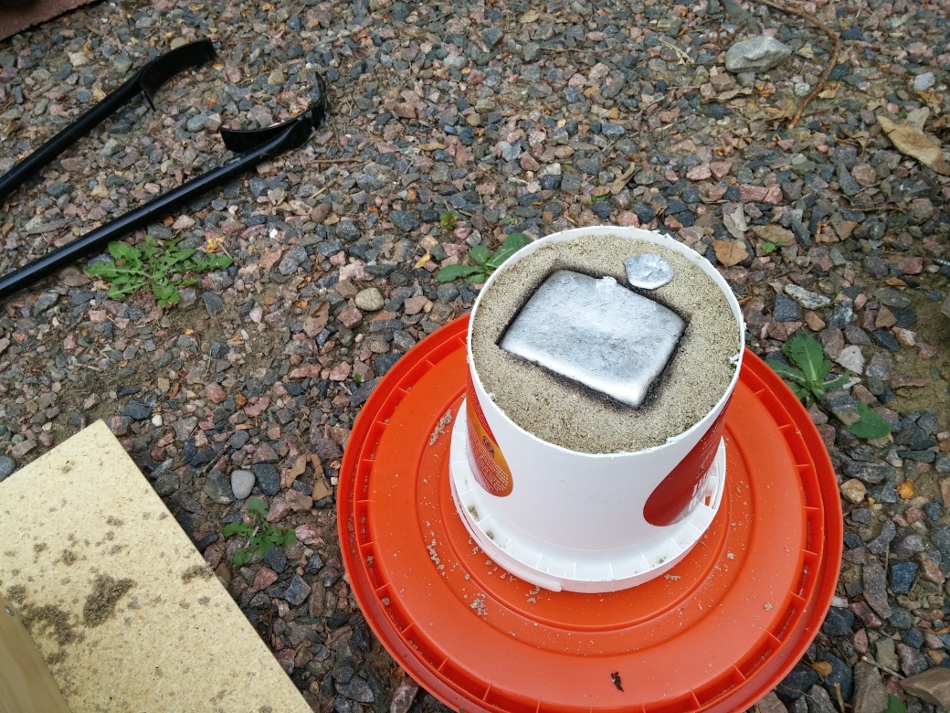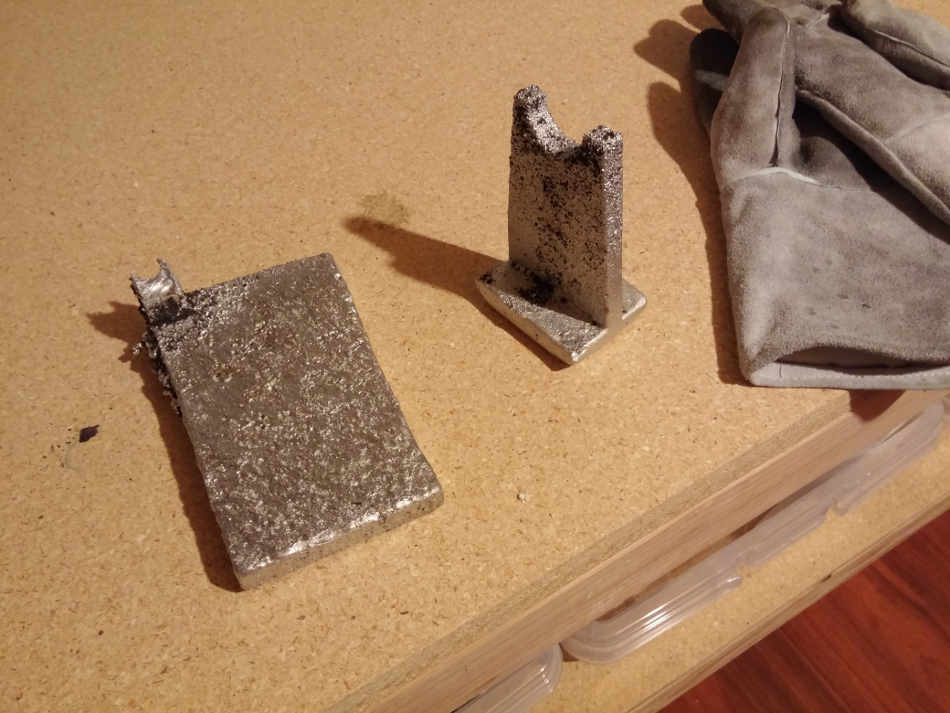This post is part of a series on making and using the Gingery Foundry.
Over the previous posts, I’ve made all the parts and accessories required to run a Gingery Foundry but had yet to actually cast any metal. Time for a test run!
My first test with the new foundry was a categoric failure. Even running at full blast, the furnace simply wasn’t getting hot enough to melt aluminum. It seemed like it was getting plenty of air, and containing the heat well (the outside of the furnace body stayed relatively cool), so I figured it was a problem with my fuel. I was trying to use “long burning” charcoal briquettes, which presumably had some additive in them to try to keep your grill from getting too hot. I picked up some lump hardwood charcoal at the store and tried again a couple weeks later.
Take two actually went pretty well. I tried out open-top casting in a muffin tin to make some ingots, some open-top casting in sand, and some lost-foam casting.
A few things about these melts surprised me: I already knew aluminum melted at a high temperature, but I didn’t really understand how high. 1) The vast majority of your fuel goes into getting the ingot up close to the melting temperature. The crucible load will sit there and not look like it’s doing anything for the first fifteen minutes, and then the entire load will liquefy in about three minutes. 2) The process works the same way in reverse, and it takes dramatically longer for the aluminum to cool down than it did to heat up. You pour a form, let it sit about 30 minutes, and break the sand off. The newly cast piece looks solid and shiny and very much like it did when you put it into the furnace. But it’s still ridiculously hot. The casting is still hot enough to burn you through double-thick, leather welding gloves. The sand that held the casting is still hot enough to burn you through gloves. The flask that held the sand that held the casting is still hot enough to burn you through gloves. You get the point. Furthermore, it stays that way for the next hour and a half.
Here are the final cast pieces. I didn’t pack the sand tightly enough, so the surface finish is pretty rough, with some sag on the lost foam casting and some sand inclusions on both. But overall, I’m pretty pleased with the results.



